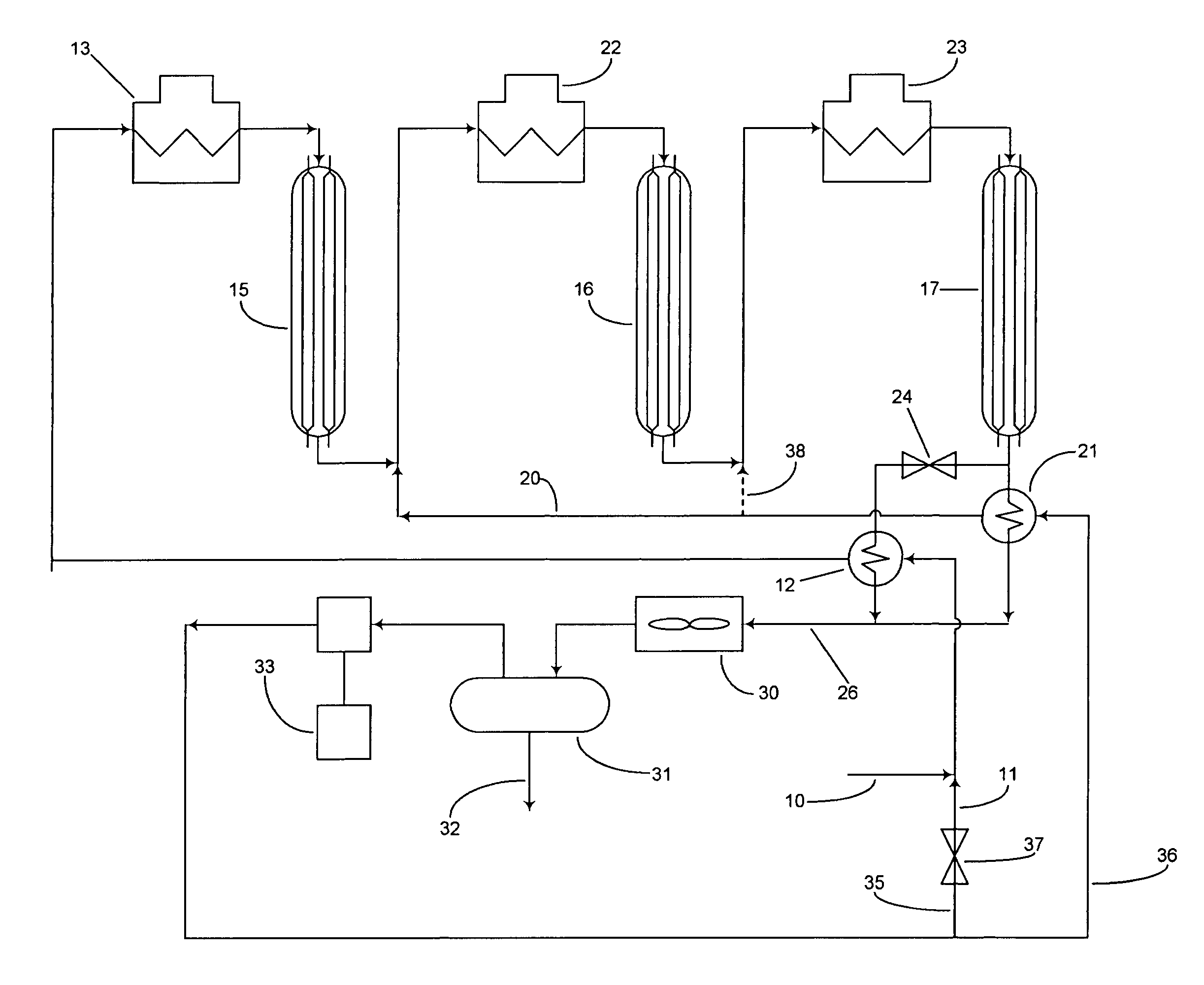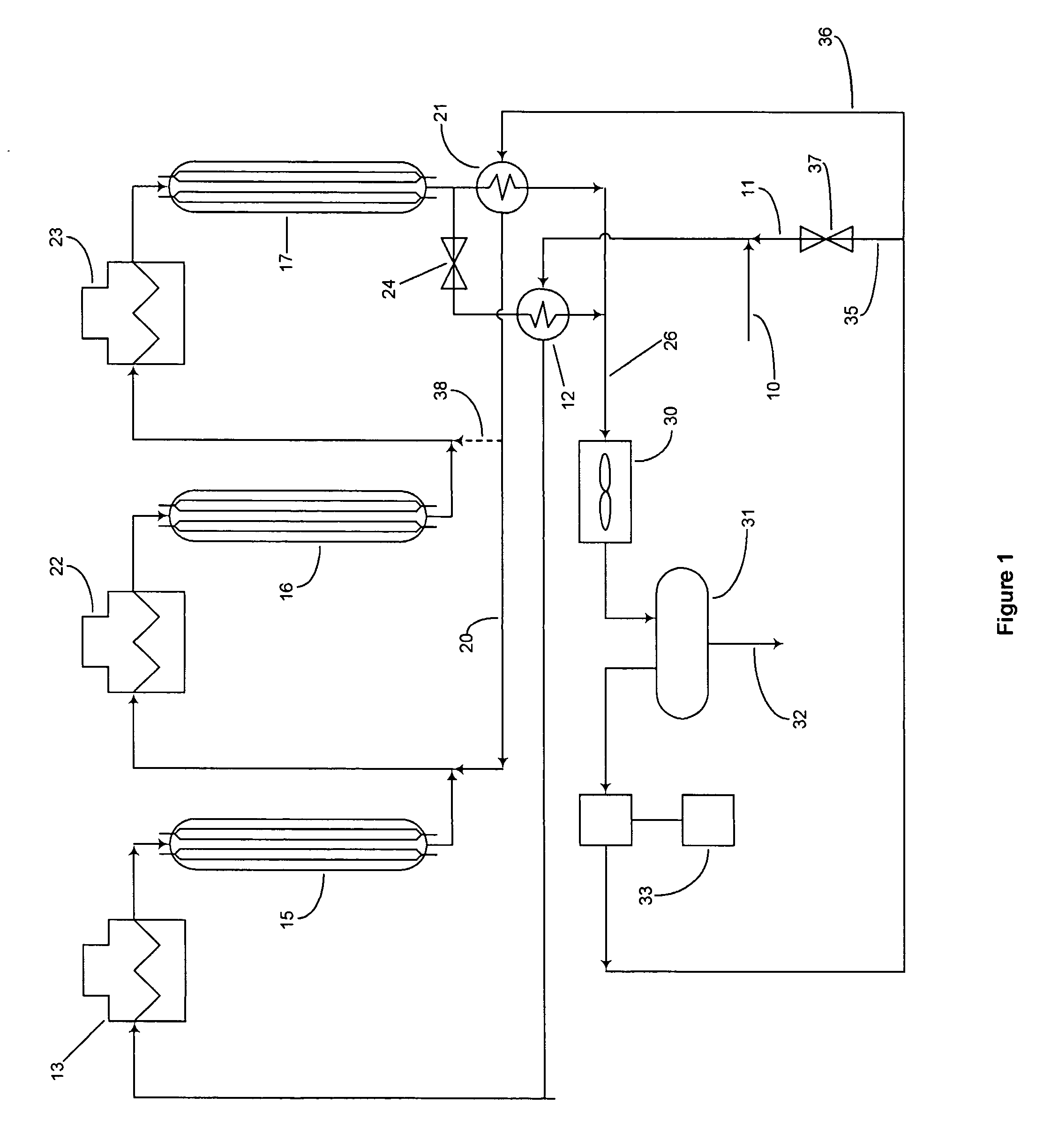Method for operating catalytic reformers
a technology of catalytic reformers and catalytic naphtha, which is applied in the direction of catalytic naphtha reforming, hydrotreatment process treatment, chemistry apparatus and processes, etc., can solve the problem of unfavorable increase in the rate of coke formation across all reactors
- Summary
- Abstract
- Description
- Claims
- Application Information
AI Technical Summary
Benefits of technology
Problems solved by technology
Method used
Image
Examples
Embodiment Construction
[0011] The present invention is applicable to catalytic naphtha reforming, that is to the process in which a hydrocarbon feed in the naphtha boiling range is subjected to reactions at elevated temperature including dehydrogenation, dehydrocyclization, isomerization and hydrocracking to convert aliphatic hydrocarbons in the naphtha feed to aromatics so as to result in a product comprising an increased proportion of aromatics (relative to the feed). Depending on the properties of the naphtha feedstock (as measured by the paraffin, olefin, naphthene, and aromatic content) and catalysts used, the reformate product can be produced with very high concentrations of toluene, benzene, xylene, and other aromatics useful in gasoline blending and petrochemical processing. Hydrogen, a significant by-product, is separated from the reformate for recycling and use in other refinery processes. While the reactions involved in the overall reforming process include both exothermic and endothermic compo...
PUM
 Login to View More
Login to View More Abstract
Description
Claims
Application Information
 Login to View More
Login to View More - R&D
- Intellectual Property
- Life Sciences
- Materials
- Tech Scout
- Unparalleled Data Quality
- Higher Quality Content
- 60% Fewer Hallucinations
Browse by: Latest US Patents, China's latest patents, Technical Efficacy Thesaurus, Application Domain, Technology Topic, Popular Technical Reports.
© 2025 PatSnap. All rights reserved.Legal|Privacy policy|Modern Slavery Act Transparency Statement|Sitemap|About US| Contact US: help@patsnap.com


